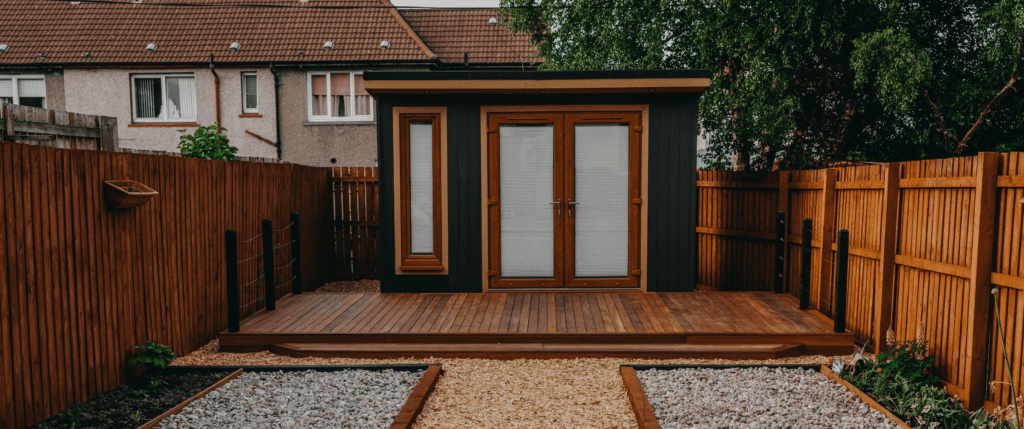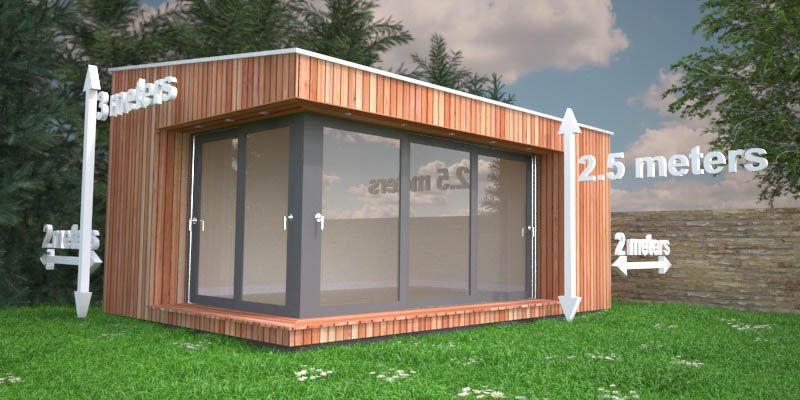
Your garden is not just an outdoor space but an extension of your home where you can exercise your creativity and improve your living environment. In the United Kingdom, there are specific regulations governing what you can and cannot do in your garden without requiring planning permission. These regulations, known as permitted development rights, allow homeowners to make certain changes and build structures in their gardens without the need for formal planning permission from the local authority. In this comprehensive guide, we will delve into the world of your permitted development rights in your garden under UK law, focusing on topics such as the size of sheds you can build and your rights concerning outbuildings. We will also explore whether planning permission is required for various types of buildings in your garden, shedding light on the opportunities and restrictions homeowners face when expanding their outdoor living space.
Understanding Permitted Development Rights
Permitted development rights are a set of rules and regulations established by the UK government that grant homeowners certain freedoms to make changes to their properties without the need for planning permission. While PDRs have existed in some form since 1948, it is only recently under the Town and Country Planning (General Permitted Development) (England) Order (GDPO) 2015[2]where significant changes have been implemented annually. These rights are designed to strike a balance between individual property rights and the need to maintain the aesthetic and environmental quality of neighbourhoods.
However, it’s essential to note that permitted development rights can vary depending on factors such as the type of property you own, its location, and any previous modifications made to it. Therefore, it’s crucial to verify your specific situation with your local planning authority or a qualified professional before proceeding with any development in your garden. To learn more about permitted development rights in your garden under UK law specific to your region search for your local Council through the government website below:
https://www.gov.uk/guidance/when-is-permission-required
Shedding Light on Garden Sheds

Garden sheds are popular additions to many UK gardens, providing valuable storage space for tools, equipment, and outdoor furniture. Under permitted development rights, you can build a garden shed without planning permission if it meets specific criteria.
Size Matters: The size of your garden shed is a crucial factor. In most cases, you can build a garden shed up to 2.5 meters in height without planning permission. If your shed is within two meters of your property’s boundary, it must not exceed 2.5 square meters in floor area. However, if your shed is more than two meters from your property boundary, it can be up to 4 meters high and cover up to 50% of the garden area.
Materials and Appearance: Your shed should be constructed using similar materials to your main property and have a design that complements your house. It should not have balconies, verandas, or raised platforms.
Location: Ensure that your shed is positioned at least 2.5 meters from the boundary of your property. If you intend to place it closer to the boundary, you may need planning permission. It’s important to be aware of the exact location of your property boundary. Building a shed right next to your neighbour’s fence means that the shed would be located close to the boundary line. You should ensure that the shed does not encroach onto your neighbour’s property.
Listed Buildings and Conservation Areas: If your property is a listed building or located in a designated conservation area, permitted development rights may be restricted or even non-existent. In such cases, you should consult your local planning authority for guidance.
Outbuildings and Their Permitted Development Rights

Apart from garden sheds, you may want to consider other types of outbuildings, such as home offices, playrooms, or studios. The regulations governing these structures are also covered by permitted development rights.
Size and Use: For outbuildings that are not intended to be used for residential purposes (e.g., as a separate dwelling), you can typically construct them without planning permission, provided they meet certain size and placement criteria. The rules for outbuildings are like those for sheds in terms of height and location.
Ancillary Buildings: Outbuildings should be considered ancillary to the main dwelling. This means they should be used in connection with the main house, such as for hobbies, working from home, or as storage. Using an outbuilding for commercial purposes, such as running a business, may require planning permission.
Building Standards: Your outbuilding should meet the necessary building standards, including fire safety regulations and electrical safety standards. It’s advisable to consult with a building professional to ensure compliance.
Separate Dwelling or Annex: If you plan to use your outbuilding as a separate dwelling or annex, it is crucial to seek planning permission, as this is not covered by permitted development rights.
Planning Permission for Specific Garden Buildings

While many garden structures can be built without planning permission under permitted development rights, some buildings require formal planning permission, regardless of their size or purpose. Here are a few examples:
Swimming Pools: The construction of swimming pools, whether indoor or outdoor, generally requires planning permission.
Hot Tubs: Installing a hot tub in your garden may or may not require planning permission, depending on factors such as size and location. It’s advisable to check with your local planning authority.
Greenhouses: Greenhouses are generally permitted developments, but in some cases, you may require planning permission, especially if they are exceptionally large or located close to boundaries.
Garden Rooms or Summerhouses: The use of garden rooms or summerhouses may affect permitted development rights, especially if they are used as a place of residence. Planning permission is often required for permanent residential use.
Gazebos and Pergolas: Simple structures like gazebos and pergolas are often considered permitted developments if they meet size and location criteria. However, any significant alterations may require planning permission.
Treehouses: Building treehouses in your garden is subject to planning permission regulations. It’s crucial to check with your local planning authority, as rules can vary.
Rights and Restrictions

While permitted development rights provide homeowners with a degree of freedom to improve and expand their properties, there are essential rights and restrictions to keep in mind:
Neighbours’ Rights: You should be considerate of your neighbours’ rights and not build structures that could impact their privacy, light, or enjoyment of their property. It’s a good practice to discuss your plans with your neighbours to address any concerns. When constructing a shed near a boundary, you should make sure that your neighbour still has access to their property. This means that the shed should not obstruct their ability to maintain or access their side of the fence or any part of their property.
Conservation Areas and Listed Buildings: If your property falls within a conservation area or is a listed building, your permitted development rights may be more restricted. It’s essential to consult your local planning authority for guidance in these cases.
Building Regulations: Even if planning permission is not required, you must still comply with building regulations. This ensures that your structures are safe and meet certain standards for construction, insulation, and fire safety.
Permitted Development Changes: It’s important to be aware that permitted development rights can change over time due to new regulations being introduced. Therefore, it’s advisable to check with your local planning authority or a professional before starting any construction project.
Conclusion
Permitted development rights in the UK provide homeowners with the opportunity to enhance their gardens and outdoor living spaces without the need for planning permission in many cases. Garden sheds, outbuildings, and various structures can be built, provided they meet specific size, placement, and use criteria. However, it is essential to remain informed about your local regulations and consult with your local planning authority or a qualified professional to ensure compliance with the law.
Your garden can become a versatile and functional extension of your home, allowing you to create spaces for relaxation, work, and play. By understanding your permitted development rights in your garden under UK law, you can make the most of your outdoor space while respecting the needs and rights of your neighbours and the local environment.

Leave a Reply